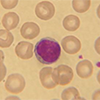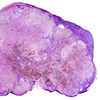Carbamazepine
Specimen Volume
0.2 mL (absolute minimum is 100 uL)Sample Preparation
Centrifuge
Turnaround Time
1 daySample Processing In Laboratory
Usual
Sample Stability
7 days at 2-8 ºC
General Information
Carbamazpine (Tegratol) is an anticonvulsant drug which is used for the treatment of generalised grand tonic-clonic (grand mal) and patial (focal) seizures. It is also used for the prophylaxis of manic-depressive illness in patients unresponsive to lithium and for the treatment of diabetic nephropathy. Carbamazpine induces its own metabolism and therefore half-life is decreased by chronic administration. Dose may need be increased to maintain effect in the first month of treatment.
Carbamazepine should be withdrawn immediately in cases of aggravated liver dysfunction or acute liver disease. Leucopenia that is severe, progressive, or associated with clinical symptoms requires withdrawal (if necessary under cover of a suitable alternative).
Common or very common side-effects include allergic skin reactions; aplastic anaemia; ataxia; blood disorders; blurring of vision; dermatitis; dizziness; drowsiness; dry mouth; eosinophilia; fatigue; haemolytic anaemia; headache; hyponatraemia (leading in rare cases to water intoxication); leucopenia; nausea; oedema; thrombocytopenia; unsteadiness; urticaria; vomiting. Uncommon side-effects include constipation; diarrhoea; involuntary movements (including nystagmus) and visual disturbances.
Some side-effects (such as headache, ataxia, drowsiness, nausea, vomiting, blurring of vision, dizziness, unsteadiness, and allergic skin reactions) are dose-related, and may be dose-limiting. These side-effects are more common at the start of treatment and in the elderly. Patients should be offered a modified-release preparation to reduce the risk of side-effects. Mild toxicity is likely above 12 mg/L and more serious toxicity above 15 mg/L.
Patient Preparation
As CBZ concentrations can vary quite markedly across the dosage interval, isolated measurements can be difficult to interpret, and standardisation of sample timing is advisable for long term monitoring. Samples should be taken at trough drug levels by collecting a sample prior to the next dose of carbamazepine.
Notes
Samples should be collected 7-14 days after commencing therapy. For routine monitoring, samples should be taken at trough drug levels by collecting a sample prior to the next dose of carbamazepine.
Not UKAS Accrediated
Reference Range
Plasma concentration for optimum response 4–12 mg/litre (20–50 micromol/litre) measured after 1–2 weeks.
For combination therapy, aim for 4-8mg/litre measured after 1-2 weeks.
Source : BNF (https://bnf.nice.org.uk/drug/carbamazepine.html)
Source of Reference Range
Pathology HarmonySpecifications
-
EQA Status:
NEQAS
- EQAS Scheme: Yes








